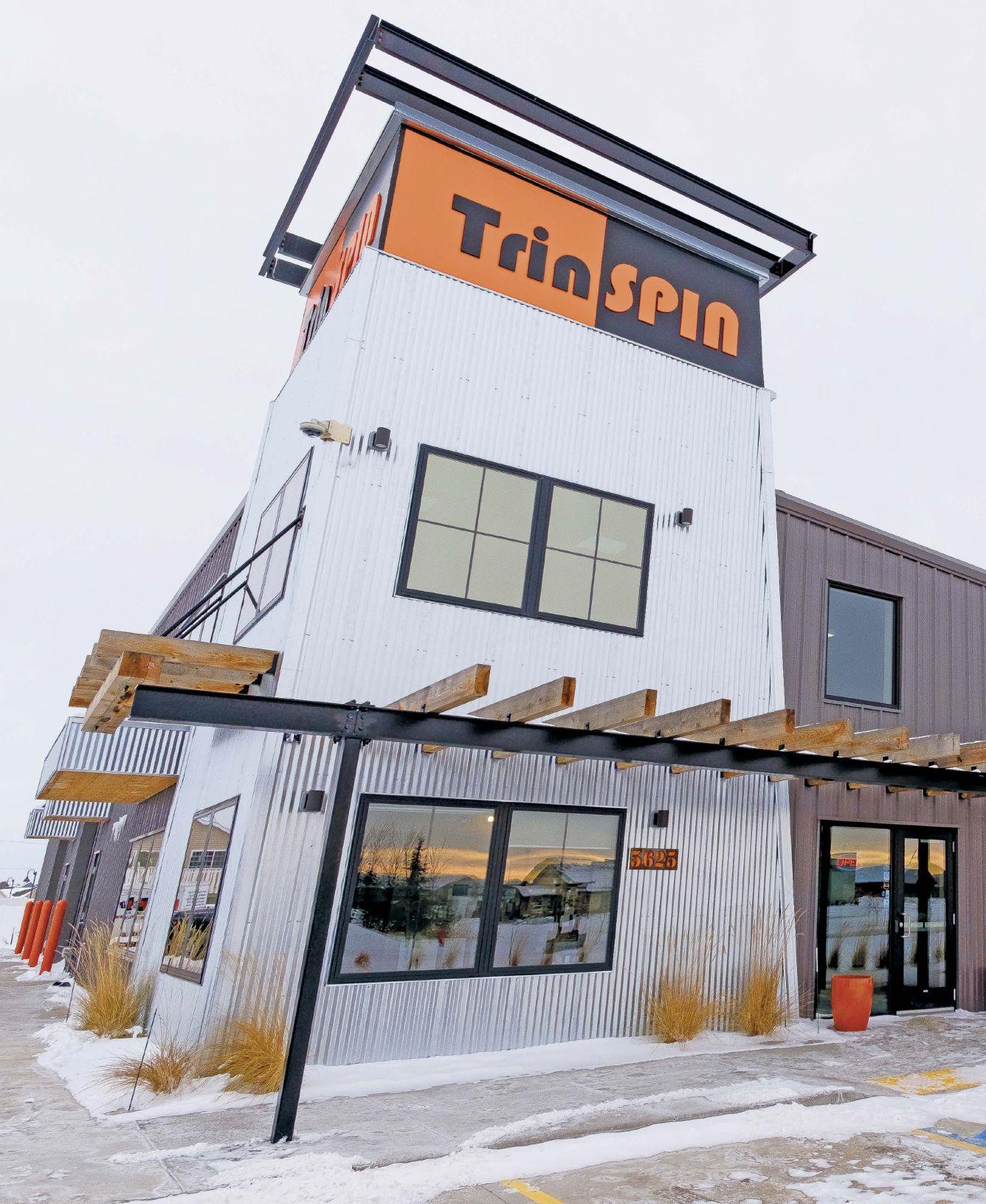
6 minute read
smartBuildingbuildingswithsmart
By Tom Dennis
FARGO, N.D. – Slowly at first. Then all at once. That’s the way bankruptcy develops, Ernest Hemingway famously said.
But in a more positive example, it’s also the way smart-building technology is making its way into our area.
“The triumph of home technology is as certain as the sun,” a columnist with the Columbus (Ohio) Dispatch wrote in early January. In the Dakotas and western Minnesota, that sun’s already on the rise, as the growing popularity of smart thermostats, smart light bulbs, smart refrigerators and smart offices and other buildings shows.
Slowly at first
The idea of remotely controlling lights, TV sets, alarms and other building systems is not new. In fact, it dates back at least to 1978, when X10 building automation products first started appearing in Sears and Radio Shack stores.
X10 products “talk” to each other via a home’s wiring. In the original set-up, a customer would plug a multi-switch remote control into, say, a kitchen outlet. Then, he or she would scatter smaller X10 modules to outlets around the home, and plug lamps, TVs and other appliances into these.
By flipping a switch on the central controller, the customer would tell an X10 module in another room to turn power off or on. Presto! Instant home automation.
Then all at once
But it took the Internet and smartphone revolutions to turn what once was a novelty into technology that’s fast becoming a necessity. Which means that before long, you’ll likely live in an environment where “the products in your home – from alarm clocks to washer dryers – will talk to one another and naturally work in tandem, where your TV screens and windows sense your movement and adjust accordingly, where music seamlessly jumps from your headphones to your stereo system,” as Mashable.com describes.
“In just a few years, that old shack of yours will truly be all grown up.”
And as that was written in 2015, the future it describes is now.
One place where these technologies are on display is in the showroom of TrinSPIN, Inc., a Fargo, N.D.-based electronics and building-automation contractor.
These days, the heart of a system typically is an iPad or similar device and/or a user’s smartphone, said Trinity Schaff, TrinSPIN’s founder and manager.
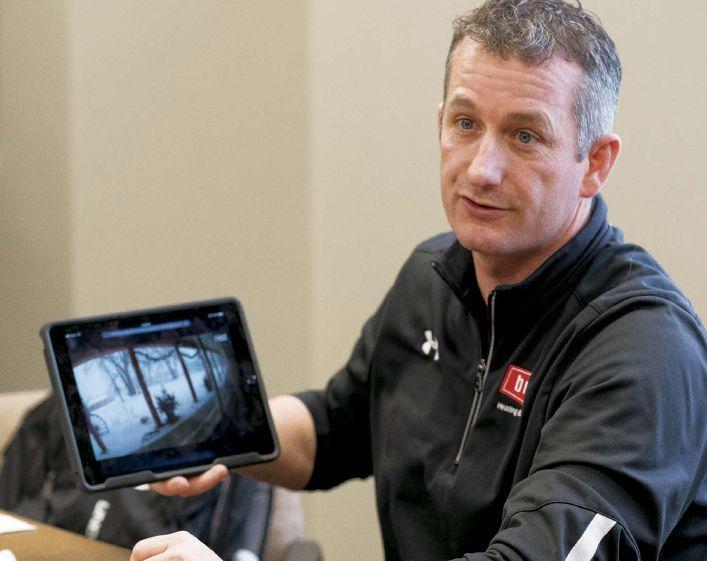
And using that technology, there simply are no limits to what a building owner can do.
“You can control multiple thermostat settings,” Schaff said. “You can say, ‘OK, I get home at 5, and I’d like the system to start warming up the house at 4.’”
Fargo-based technology contractor TrinSPIN, Inc. sells home and commercial automation products, including security, home theater, audio systems and so on.
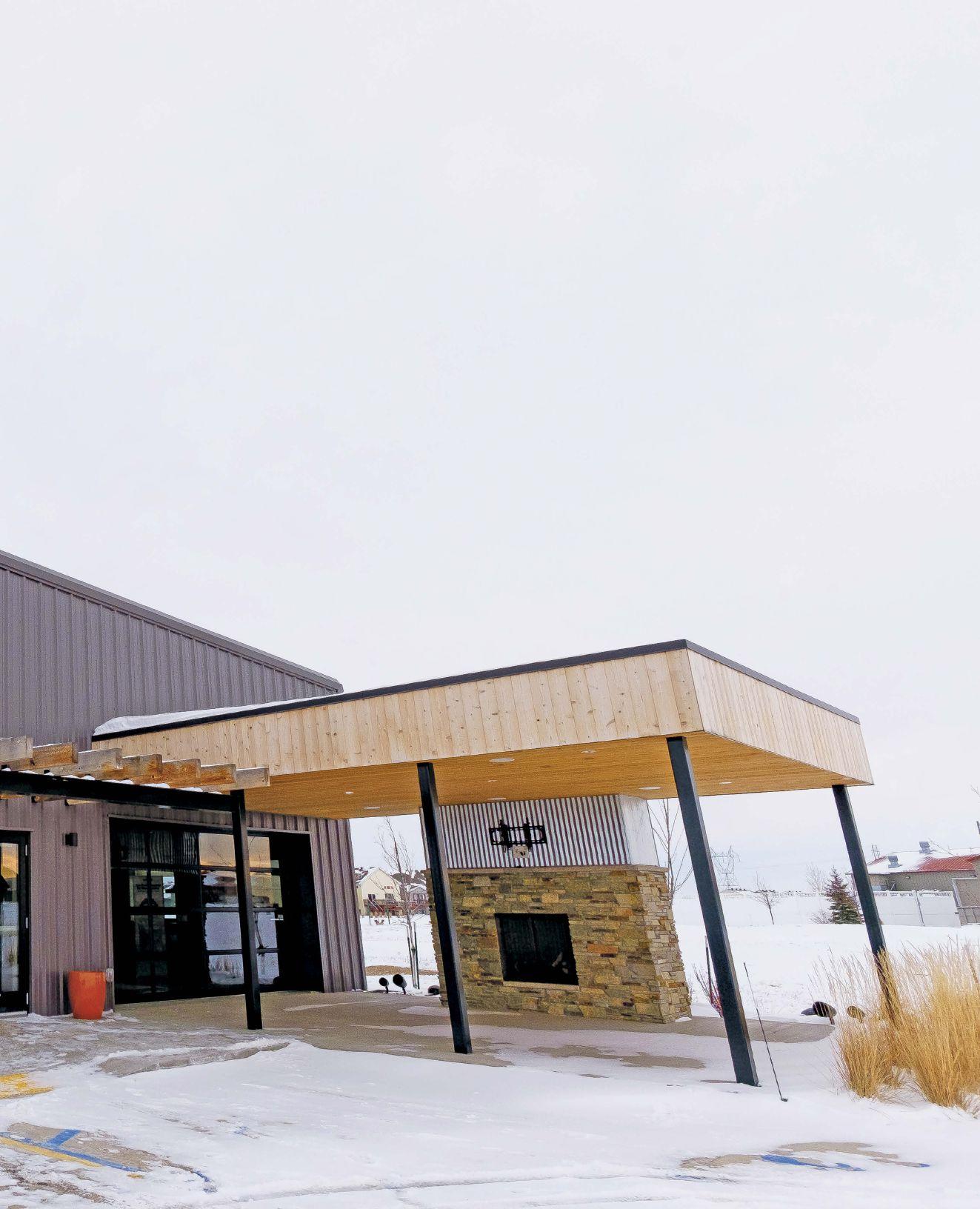
Or you can have it raise your garage door, disarm your home alarms, unlock your door and turn on your kitchen lights when you pull into your driveway.
Or set up a particular “scene” at the touch of a touch-screen. “Movie time” could mean blinds close, lights dim and the home entertainment system comes on; “Good morning” could greet you with dimmed lights that gain intensity as you wake up.
“Vacation” could shut off your water, lower your thermostat, energize your alarms and lock all your doors.
And all of these events, you can make happen by phone.
“There’s no ‘no’ involved with this any more,” Schaff said. “There may be a cost factor, but there really is nothing that cannot be done.”
Costs come down
Speaking of the cost factor, that’s likewise not even close to what it used to be, said Justin Gibb, business development director for Robert Gibb & Sons, a Fargo-based mechanical contractor.
Years ago, a complete home-automation system could run north of $10,000 or $15,000. Today, “for $1,800, a person could get started on an automation system. That would include the products, the labor to put it in and the instructions for the homeowner.”
And for even less money, you can start to equip your building with smart products. For example, smart smoke and carbon-monoxide detectors – with prices ranging from $50 to $150 – are notable improvements from previous detectors, said Mike Halvorson, territory manager for Auer Steel & Heating Supply Co. of Fargo.
Over time, the sensors in smoke detectors go bad, Halvorson said. “So, a smart detector can check those sensors 400 times a day and alert you if something’s wrong.
“If the smoke detector goes off and nobody’s home, it’ll alert you by phone to that, too.”
These days, some detectors can detect motion, which means they’ll automatically light your way to the bathroom at night.
And in an advance that shows the difference between building monitoring and building automation, some detectors will take further action upon detecting carbon monoxide. Not only will they beep and talk and send alerts to your phone, they’ll also shut the furnace off.
IMAGE: ONE
“We’re just at the tip of the iceberg,” Gibb said.
“People seem more willing to spend money on smart-home systems now than they are on granite countertops. And millenials, they’re thinking more about smart homes now than they are about curb appeal.”
Smart schools and offices
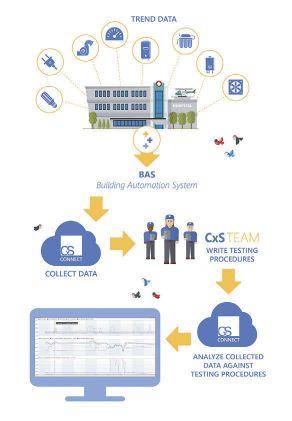
As with homes, so with government and commercial buildings – maybe even more so, thanks to the cost efficiencies and energy savings involved.
The Crosslake Community School, a charter school under construction in Crosslake, Minn., will incorporate extensive smartbuilding components, said Mike Angland, architect and vice-president at Widseth Smith Nolting in Baxter, Minn.
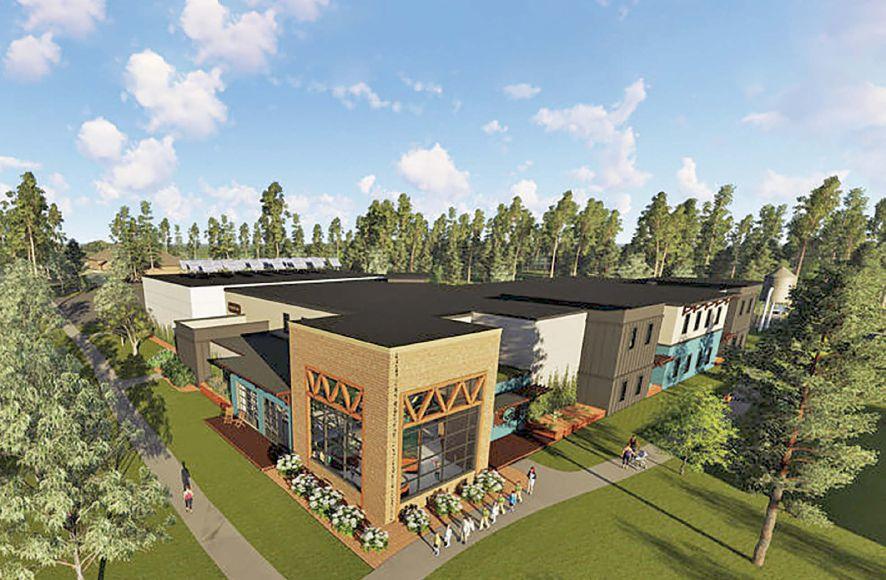
“Take occupancy sensors,” Angland said. By sensing carbon-dioxide levels, the sensors “will know whether the gymnasium holds zero people or 400 people. Then, the technology can automatically temper and condition that space based upon the occupancy.”
Lights will turn on when people enter a room. The light fixtures themselves will adjust brightness depending on how much daylight is present.
And the whole system will be tied in to a dashboard that’ll be on display, so students and teachers can track how much energy the school is using, Angland said.
At a recent conference in California, Alan Dostert, president and CEO at EAPC Architects Engineers in Fargo, saw a presentation on the future of health care: a prototype hospital smart room.
“The patient’s bed is tied into the building,” Dostert said. “And it senses many of the things that the patient needs.”
Those include lighting changes, room temperature changes and position changes, if the patient has stayed in one position for too long. The sensors also can detect heart rates, breathing rates and when the patient climbs out of bed.
Likewise, when a dialysis machine is wheeled in, the room knows. So it automatically bumps up the room temperature, because patients undergoing dialysis often get chilled.
Bandage supplies low? The room knows. Medications due? The room knows that, too.
Such complete systems “are not here in our region yet,” Dostert said. But they’re going to be. “And without question, the advances in patient comfort and patient care over the next few years are going to be incredible.”
“Incredible” is the word BNG Team hopes visitors will use upon entering the company’s new building, which now is under construction in Fargo.
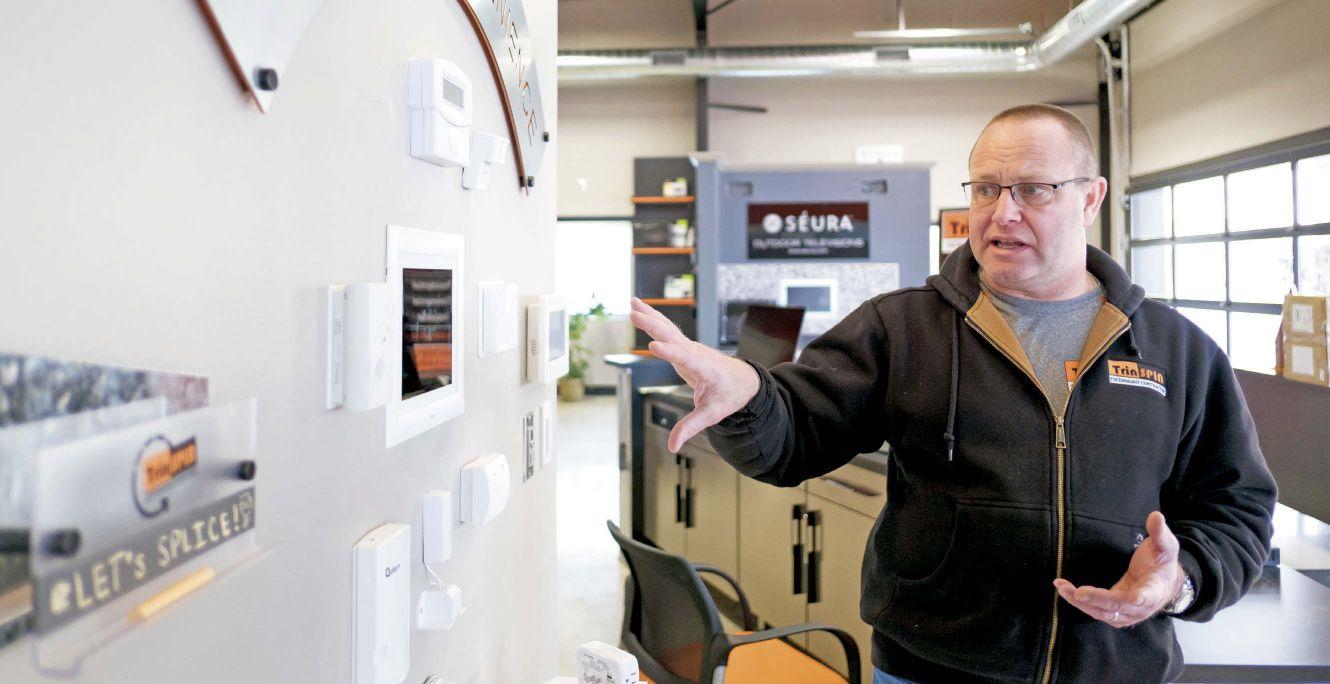
Actually, that’s not the exact quote. “We want people to walk into the building and say, ‘Wow! We didn’t know we had workplaces like this in this part of the country’,” said Jason Gibb, chief operating officer.
Started by three friends who dropped out of North Dakota State University to start a payment processing company, BNG Team now employs 47, and its missions as well as its roster continue to grow.
To that end, the new three-story, 34,000-square-foot building will offer a mini-Google-like campus with the goal of attracting and retaining top employees.
Slides linking one floor to the next? Check. A gym with Internetlinked screens and cardio equipment? Check. Fully wired conference rooms equipped with digital screens and wireless mikes? Check.
Automatic lighting, heating and locking systems? Check. Motorized sit/stand desks throughout? Check.
And an auditorium that can convert to a basketball court or an indoor paintball arena?
Check.
As for controls, “it’s basically just iPads,” Gibb said. “So we can have a mobile control system, which means we can run everything from anywhere inside or outside of the building.”
Let Prairie Business be the first to say Wow.
From automation to analytics
And as exciting as these changes are, the next stage promises to be even more so, said Brent Wavra, managing principal and mechanical engineer with Obermiller Nelson Engineering of Minneapolis, Fargo and elsewhere.
“What I’m talking about now is probably the biggest leap in our industry that I’ve seen in the several decades that I’ve worked in it,” Wavra said.
The topic is data analytics. And that means collecting the data from throughout these automation system, then analyzing it by computer to spot problems and find efficiencies.
Suppose a water pump is running at night when the building doesn’t need it. Not long ago, the water could have run for years without anyone finding out. Today, it’s a data point that computers can spot and a technician quickly can fix.
Now, think of all the HVAC and other machines across all the Big Box stores in a chain.
You’ll see the potential for savings, Wavra said.
“It’s very powerful when you start looking at large campuses, university systems, hospital systems – places where you’re not just looking at a few pumps here and there, but at tens of thousands of machines,” he said.
“We’re talking 10 percent, 20 percent, 25 percent reductions in energy use, because we now have the lens to see what we never could see before.
“It’s like having an energy engineer on every piece of your equipment, 24/7.”
Understand, engineers for years have worked hard to find energy savings of even 1 percent or 2 percent.
Now, with the prospect of data analytics yielding double-digit savings, sometimes on multi-million dollar energy bills. ...
“This is revolutionary,” Wavra said. “It’s the wave of the future for sure.” PB










